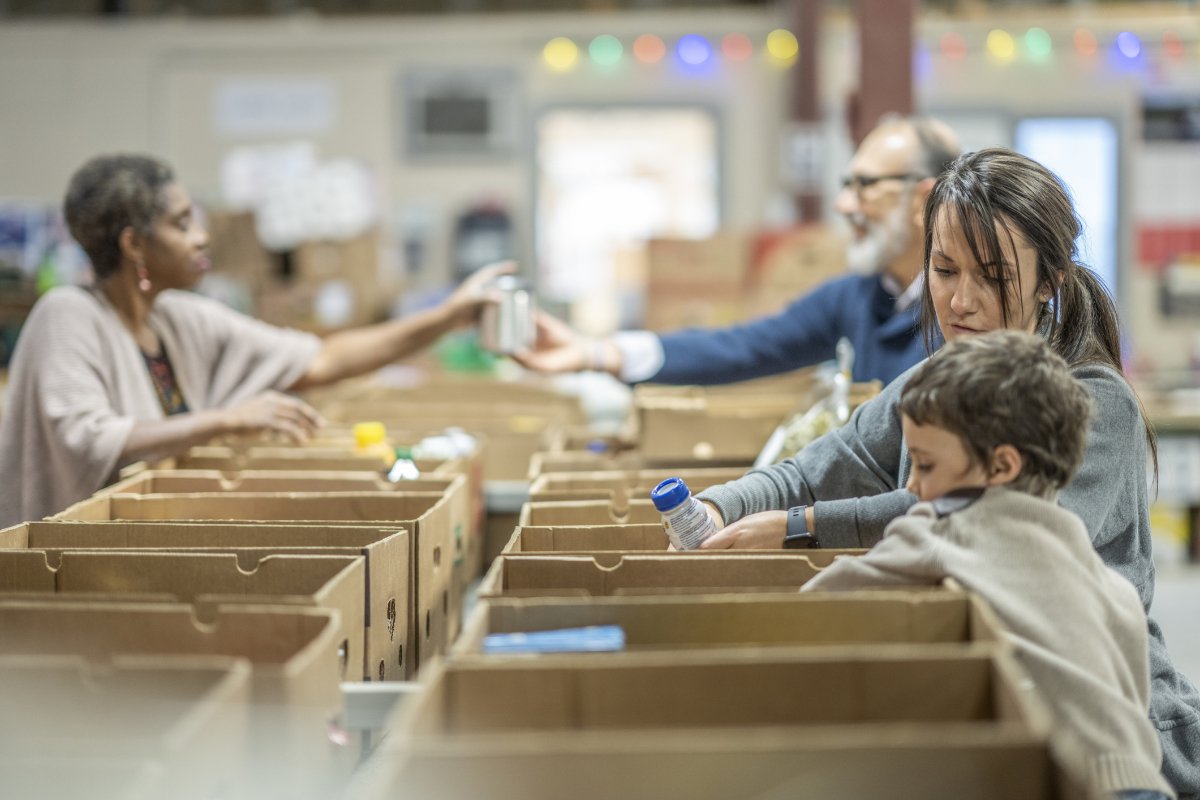Dec 16, 2021
Hunger Continues to Plague Americans. Here's What We Can Do About It.

Editor’s Note: The mental impacts of food insecurity are rarely discussed, if ever. The painful story of this single Mom that hit the top of her benefits cliff and was cut off from SNAP, but had to go on feeding her two teenage children, paints a picture of the lives of numerous Black & marginalized families. We simply cannot continue on like this. We need more and better Federal Assistance Programs, and we need to step up and better support these populations by working together to break down barriers surrounding access to healthier and more nutritious foods.
CONTENT SOURCED FROM CIVIL EATS
WRITTEN BY LELA NARGI
Food insecurity—and our failure to address it—has remains one of our largest challenges. The pandemic allowed researchers to track what programs and interventions actually work.
Growing up in North Philadelphia’s Hunting Park neighborhood, Barbie Izquierdo knew that the way she and her family lived wasn’t “normal.” Her Cuban-born father served time in prison for the first 10 years of her life, and her mother suffered from mental health issues that precluded her from working. Izquierdo and her older brother survived on social security income, food stamps—now called the Supplemental Nutrition Assistance Program (SNAP)—and the generosity of their neighbors, who were also struggling but would pitch in with a can of beans or a cup of rice when the larder was bare.
Despite all this, Izquierdo says, “It wasn’t until I became a parent that I really understood what it feels like to be food insecure. What it does to you mentally I still have not recovered from.”
As a single mom, Izquierdo contended with a cold apartment, a son who was going blind, and “plenty of days when I couldn’t afford to feed myself.” She’d feed her son and daughter, who are now both teenagers, then “‘read eat:’ go into another room and read [takeout] menus, and ask, ‘What would I want to eat today?’ I was feeding my brain when I couldn’t put food into my stomach.”
Landing a full-time job was no salvation; with an hourly wage that put her $2 over the income limit for benefits—“Just enough to feel like you’re still poor but . . . not homeless”—she hit what’s called the benefits cliff and was cut off from SNAP, her childcare subsidy, cash assistance, and her kids’ free and reduced-price school lunches.
Izquierdo is now much better situated as a community empowerment manager for the advocacy organization Hunger Free America, and has recently left the sirens and gunshots of her old neighborhood for a home with a grassy yard in Florida. But she still lives with the after-effects of longstanding trauma. “I cannot eliminate the fear that all this can be taken away at any moment,” Izquierdo says. “Food insecurity is psychological warfare.”
That same fear pervaded the days of almost 35.2 million (or 10.9 percent) of U.S. residents in 2019, before COVID hit. Although the USDA found that food insecurity rose in communities of color, and in Black communities in particular, it remained steady overall. As a result, it’s clear to researchers that when federal, state, and municipal governments, along with private-sector groups, put their minds to it, they can make a dent in our country’s current and abiding needs crisis.
We have long reported on food security and wanted to dig in at this moment to better understand what works to lower food insecurity rates and why—and how we can keep it going in the long term.
Federal Assistance Programs: One Important Solution
Food insecurity doesn’t exist in a vacuum. It’s part of a much larger knot of challenges that includes nutrition insecurity, or the lack of adequate healthy food and the resultant tilt toward diet-related diseases, and poor learning outcomes for kids; lack of self-sufficiency; and structural racism, which ensures that certain communities consistently have lower access to healthy food. The umbrella over it all is poverty, which sets all these other pieces in motion.
“The pandemic underscored a lot of things we already knew from the research, including the reminder that food insecurity should not be viewed in isolation,” says Joseph Llobrera, director of research for the food assistance team at the Center on Budget and Policy Priorities.
Nevertheless, the poverty umbrella is so wide that its components often still have to be contended with piecemeal. Let’s start with SNAP, which is widely considered by many researchers to be “one of the most effective food security programs in the country,” according to Meg Breuning, associate professor in Arizona State University’s College of Health Solutions. As food insecurity numbers fluctuated in 2020, the USDA increased the maximum benefit—determined by what’s called the Thrifty Food Plan (TFP)—by 15 percent; this was the first time the effective value of SNAP had changed since the 1960s.
As a result, says Lauren Bauer, an economics fellow at the Brookings Institute, food insecurity dipped. When that maximum benefit increase expired in September, another increase, of 21 percent, was authorized in October for 2022. “The evidence we’ve gained over the past two business cycles on the consequences of raising that maximum benefit is that spending well-targeted money on a basic necessity makes sense,” Bauer says. “SNAP solves the problem it was authorized to solve.” Similarly, the USDA increased food assistance for people enrolled in the Food Distribution Program on Indian Reservations (FDPIR), a program that has lately increased the amount of fresh foods it provides to participants.
The Special Supplemental Nutrition Program for Women, Infants, and Children (WIC) is also “highly effective in improving . . . health outcomes, not just for kids, but for mothers and parents as well,” says Llobrera. Additionally, Breuning points out that increasing the program’s fruit and vegetable allotment in October of 2021 should have been “effective” in increasing healthy food access for low-resource families. However, WIC enrollments declined during the pandemic, for reasons researchers have yet to suss out.


